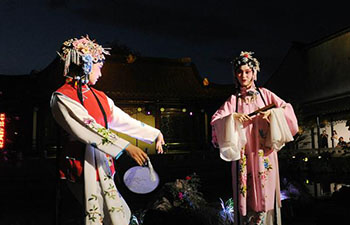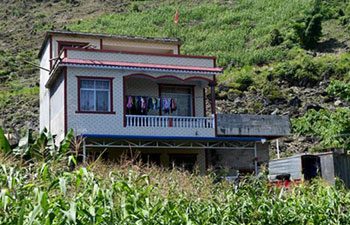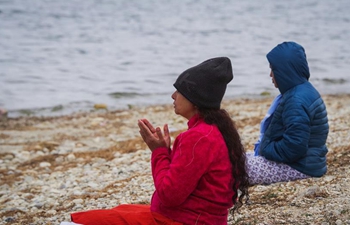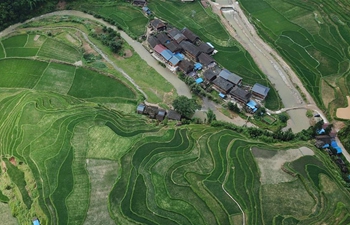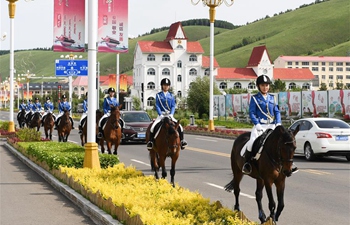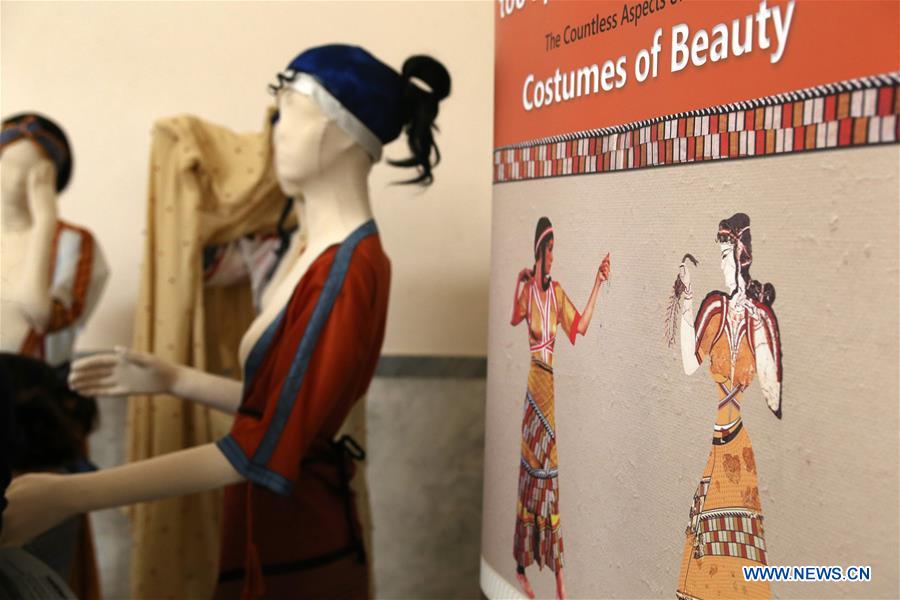
Replicas of the Minoans and Mycenaeans costumes created by Bernice Jones, researcher and archaeologist from the U.S., are displayed during an exhibition at the National Archaeological Museum in Athens, Greece, on June 28, 2018. Costumes worn by the Minoans and Mycenaeans of the Bronze Age in ancient Greece were brought to life during an experimental workshop at the National Archaeological Museum of Athens on Thursday. (Xinhua/Marios Lolos)
ATHENS, June 28 (Xinhua) -- Costumes worn by the Minoans and Mycenaeans of the Bronze Age in ancient Greece were brought to life during an experimental workshop at the National Archaeological Museum of Athens on Thursday.
The replicas were created by the researcher and archaeologist Bernice Jones from the U.S. after many years of research and study.
"I was amazed by the liveliness of female figures captured in motion, by their proud, arched backs and, most of all, by their magnificent costumes designed to celebrate their curvaceous anatomy," she told Xinhua, explaining how she started her research on Minoan art.
Since ancient Aegean textiles and garments have not survived, Jones collected, analyzed and compiled a typology of the corpus of garments represented in sculpture and frescoes.
During her research, she looked at works of art that had an image of garment on them from the mainland and the Aegean Sea islands
"Crete is where we have the earliest material, where everything began. Then it spread to the islands and to the mainland. I looked for elements of how they made the textiles in the art," Jones told Xinhua.
"I looked in Egypt where we have preserved textiles for the technology and then to the Near East Mesopotamia for other representations that are similar to the clothing we have in the Aegean. Several of the costumes were made earlier and styles were earlier in the Near East."
According to the archaeologist, the Minoans borrowed those garments from the Near East and brought them to Crete and they did that for religious purposes.
For the first time, museum visitors had the opportunity to experience a possible aspect of the costumes represented in iconic antiquities of the National Archaeological Museum, such as The Ivory Triad from Mycenae, the Ivory Figurine from Prosymna and the well-known "Mycenaean Lady" from Mycenae.
All three figures show robes with shoulder bands and deep V-shaped and banded front openings that surround or cover the breasts, and skirts and kilts that wrap around the body.




